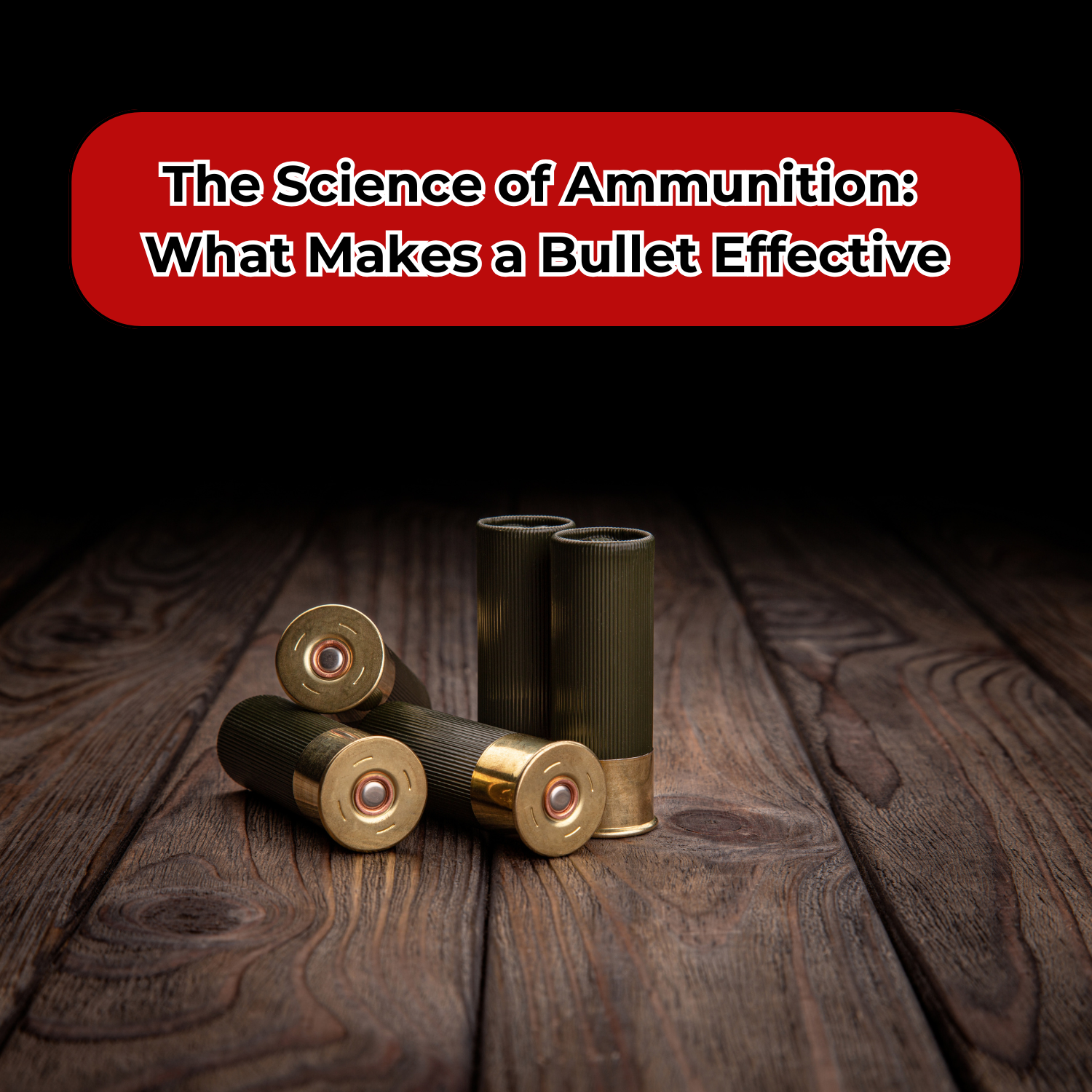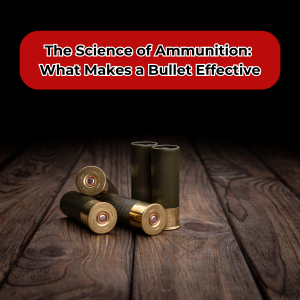
Ammunition is a critical component in firearms, determining the accuracy, power, and overall effectiveness of a shot. Understanding the science behind what makes a bullet effective can help enthusiasts, hunters, and professionals alike select the right ammunition for their needs. In this article, we’ll delve into the key factors that influence bullet performance.
The Anatomy of a Bullet
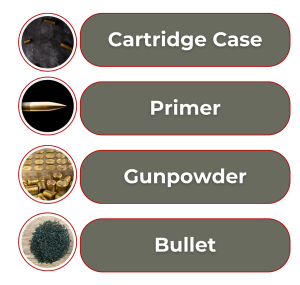 A bullet is a complex piece of engineering, consisting of several parts that work together to achieve its intended purpose. The main components include:
A bullet is a complex piece of engineering, consisting of several parts that work together to achieve its intended purpose. The main components include:
Cartridge Case
The cartridge case is the container that holds all the other components together. It is typically made of brass, steel, or aluminum. The case is designed to expand and seal the chamber of the firearm when the round is fired, preventing gas from escaping backward.
Primer
The primer is a small but essential part of the bullet. It contains a chemical compound that ignites when struck by the firing pin of the gun. This ignition sets off the gunpowder inside the case.
Gunpowder
Gunpowder, or propellant, is the substance that burns and produces the gas needed to propel the bullet out of the barrel. The type and amount of gunpowder affect the velocity and pressure of the shot.
Bullet
The bullet itself is the projectile that is fired from the gun. Bullets come in various shapes, sizes, and materials, each designed for specific purposes. The design of the bullet greatly influences its aerodynamics, penetration, and stopping power.
Factors Influencing Bullet Effectiveness

Several factors determine the effectiveness of a bullet, including its design, material, velocity, and more. Let’s explore these factors in detail.
Bullet Design
The design of a bullet plays a crucial role in its performance. There are several common bullet designs, each tailored for different applications:
Full Metal Jacket (FMJ)
FMJ bullets have a soft lead core encased in a harder metal shell. They are known for their ability to maintain their shape and penetrate deeply, making them ideal for target shooting and military applications.
Hollow Point (HP)
Hollow point bullets have a cavity in the tip, which causes the bullet to expand upon impact. This expansion increases the bullet’s diameter, creating a larger wound channel and transferring more energy to the target. They are commonly used in self-defense and hunting.
Soft Point (SP)
Soft point bullets have an exposed lead tip, allowing for controlled expansion upon impact. They offer a balance between penetration and expansion, making them suitable for hunting medium to large game.
Bullet Material
The material of the bullet also affects its performance. Common materials include:
- Lead: Soft and dense, lead is commonly used in bullets due to its malleability and effectiveness at transferring energy.
- Copper: Harder than lead, copper is used in bullet jackets to improve penetration and reduce barrel fouling.
- Steel: Often used in military ammunition, steel is harder than both lead and copper, offering high penetration but less expansion.
Velocity and Energy
The velocity of a bullet is the speed at which it travels when fired. Higher velocity generally means flatter trajectory and greater energy transfer, but it also results in greater recoil. The kinetic energy of a bullet is calculated using the formula:
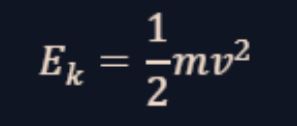
where Ek is the kinetic energy, m is the mass of the bullet, and v is its velocity. High-energy bullets are more effective at penetrating targets and causing damage.
Ballistics and Accuracy
Ballistics is the study of the dynamics of projectiles. There are three main types of ballistics that affect bullet performance:
- Internal Ballistics: This refers to the processes that occur within the firearm from the time the primer is struck until the bullet exits the barrel.
- External Ballistics: This is the study of the bullet’s flight from the barrel to the target. Factors such as gravity, air resistance, and wind affect the bullet’s trajectory.
- Terminal Ballistics: This focuses on the bullet’s behavior upon impact with the target, including penetration, expansion, and energy transfer.
Choosing the Right Ammunition
Selecting the right ammunition depends on your specific needs, whether it’s for self-defense, hunting, or target shooting. Here are some tips to help you choose:
Self-Defense
For self-defense, hollow point bullets are often recommended due to their ability to expand and cause significant damage to an attacker while reducing the risk of over-penetration.
Hunting
Hunters typically choose soft point or hollow point bullets. The choice depends on the game being hunted: soft points are great for larger game, while hollow points work well for smaller game.
Target Shooting
For target shooting, full metal jacket bullets are preferred due to their affordability and consistency. They offer good accuracy and can penetrate targets deeply without expanding.
Conclusion
Understanding the science behind ammunition and what makes a bullet effective is crucial for making informed decisions. By considering factors such as bullet design, material, velocity, and ballistics, you can select the right ammunition to meet your needs. Whether you’re a seasoned shooter or a beginner, this knowledge will enhance your shooting experience and help you achieve better results.
